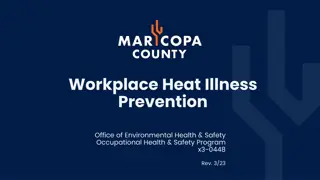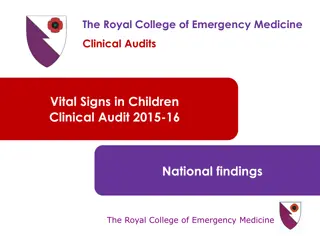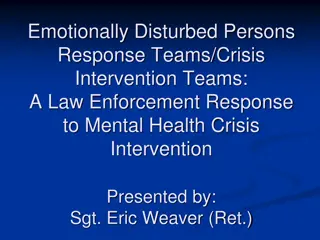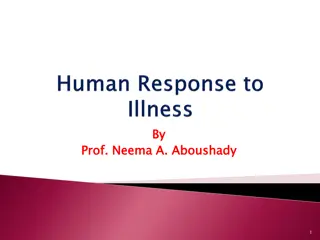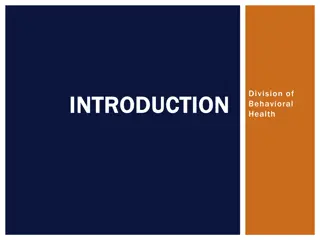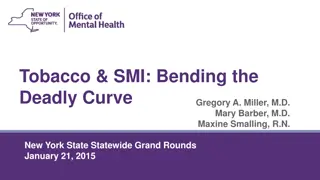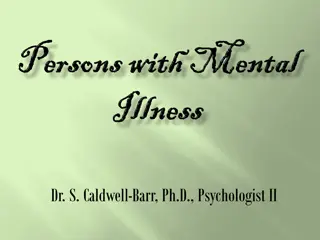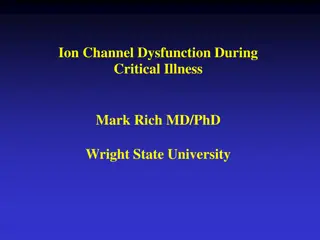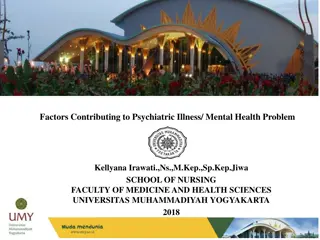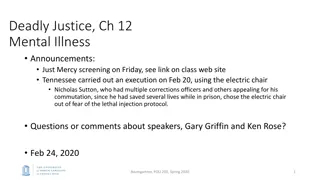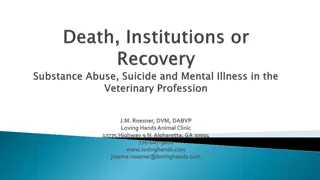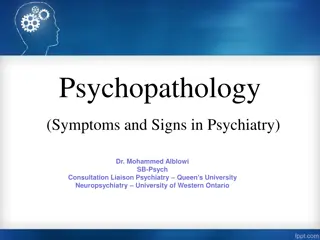Understanding Signs of Illness and Proper Response in Healthcare Management
Explore common signs and symptoms of illness, learn how Direct Support Professionals should respond when suspecting sickness, and understand the consequences of not addressing signs promptly. Engage in activities promoting preparation, advocacy, and empowerment in healthcare management.
Download Presentation

Please find below an Image/Link to download the presentation.
The content on the website is provided AS IS for your information and personal use only. It may not be sold, licensed, or shared on other websites without obtaining consent from the author. Download presentation by click this link. If you encounter any issues during the download, it is possible that the publisher has removed the file from their server.
E N D
Presentation Transcript
Residential Services Curriculum Chapter 9 Healthcare/Health Management
Discussion Questions: What are common signs or symptoms of illness? How should a Direct Support Professional (DSP) respond if they suspect someone they support is ill or sick? What could happen if a DSP does not respond timely when they see signs or symptoms of illness.
Preparation Advocacy Empowerment Doctor s Visit Activity
Please click on the link to show the video. Video Title: Can Toilet Germs Reach Your Toothbrush https://www.youtube.com/watch?v=EG_PnRCLe9A
Please click on the link to show the video. Please click on the link to show the video. Video Title: Tonic Clonic Siezure SD https://www.youtube.com/watch?v=0AyTyNK_L-c
Please click on the link to show the video. Video Title: Laughter Yoga: Laughing Away The Stress https://www.youtube.com/watch?v=lGNOF8DVIPQ
Please click on the link to show the video. Video Title: What Is Drug Abuse? https://www.youtube.com/watch?v=1KjyzcF2Fzc
Please click on the link to show the video. Video Title: What is Substance Abuse? https://youtu.be/uFVyQ3Z_Pq0
Please click on the link to show the video. Video Title: Mental Health: In Our Own Words https://www.youtube.com/watch?v=_y97VF5UJcc
Mental Health Empathy Discussion Discussion Questions: Sometimes mental illness is known as an invisible disability. What you think invisible disability means? Why might a person living with depression hide that from friends, co-workers and others? How does mental illness impact your workplace? Colleagues? Individuals you support?
Aging Empathy Discussion Discussion Questions: As all individuals age what are some of the advantages to aging? Challenges? As we work hard to support and empower those in our programs, what do we need to consider as the individual we work with ages? More help with daily activities? Name them. Increased medical needs? What could this be? Normal memory loss? Is there a risk of this being ignored because an individual has a developmental disability?
Please click on the link to show the video. Video Title: Aging, Retirement and End of Life for People with Intellectual and Developmental Disabilities? https://www.youtube.com/watch?v=yAJO_yGa9nA
How blood borne pathogens are spread in the workplace Can be spread by: CANNOT be spread by: A needle stick or puncture wound Providing care using standard precautions Sharing eating utensils, plates or glasses Sharing bathrooms Through the air Hugging, shaking or holding hands Helping a person who is bleeding Changing lines that are contaminated with blood or other bodily fluids Helping to clean vomit, urine or feces Changing or dressing a wound contact with mucous membranes (mouth, nose and eyes)
Exposed? Your eyes Flush immediately with water for 5 minutes. Rise under clean running water. Blood or body fluids in your mouth Rinse mouth with 50/50 hydrogen peroxide and water. Rinse with clean water. Get medical attention. Both eyes and mouth Immediately rinse as above and seek medical attention
Exposed? Needle stick or puncture wound Wash thoroughly with soap and water or pour small amount of hydrogen peroxide on the wound. Get medical help for further attention. Any bit, scratch or lesion that may have had blood or body fluid exposure. Wash the area thoroughly with soap and water and pour a small amount of hydrogen peroxide on the wound. Cover wound with sterile dressing. Get medical attention.
Review the learning objectives Questions? Time for Assessment




